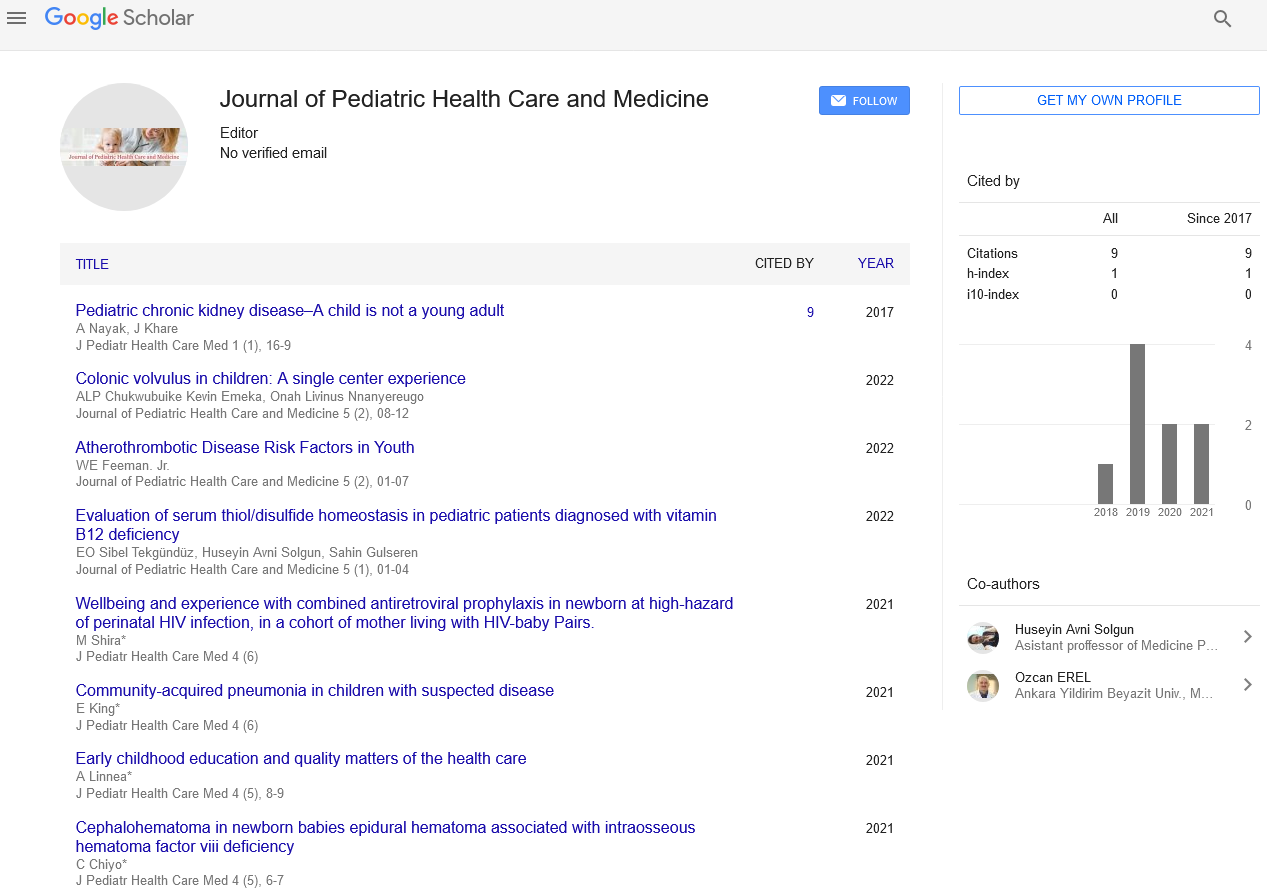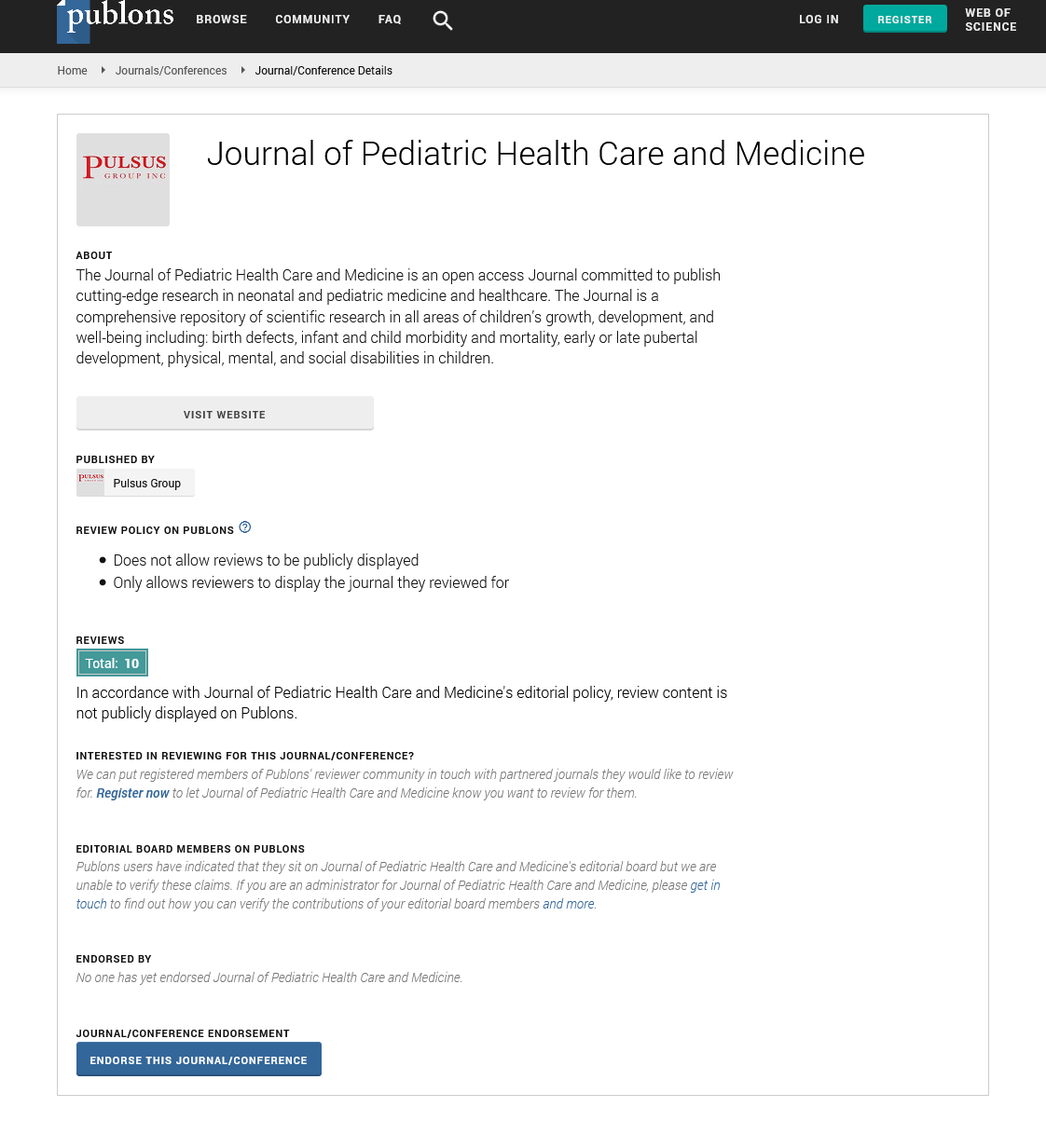General Pediatrics 2017: Regression of large infantile multifocal hepatic hemangioma after Propranolol- Sara Lobo- Santa Maria Hospital
2 Pediatric Surgery Division, Pediatrics Department, Santa Maria Hospital, Portugal, Portugal
Received: 30-Dec-2020 Accepted Date: Jan 07, 2021; Published: 20-Jan-2021
Citation: None
This open-access article is distributed under the terms of the Creative Commons Attribution Non-Commercial License (CC BY-NC) (http://creativecommons.org/licenses/by-nc/4.0/), which permits reuse, distribution and reproduction of the article, provided that the original work is properly cited and the reuse is restricted to noncommercial purposes. For commercial reuse, contact reprints@pulsus.com
Abstract
Latest literatures describe numerous cases of successful response of infantile liver hemangioma to propranolol treatment. Some multifocal hepatic hemangioma can involve a massive area of the liver in children and carry a high threat of increase in cardiovascular compromise, requiring a fast approach and monitoring. This case report describes a 3-months infant with a huge multifocal hepatic hemangioma for who was proposed to start propranolol. Treatment was done in a 20 months period without report to any side effects and a surprisingly fast response. The authors present this case to emphasize the efficacy and safety of blocker-β propranolol treatment in young children even for very large liver hemangiomas.
Abstact
Latest literatures describe numerous cases of successful response of infantile liver hemangioma to propranolol treatment. Some multifocal hepatic hemangioma can involve a massive area of the liver in children and carry a high threat of increase in cardiovascular compromise, requiring a fast approach and monitoring. This case report describes a 3-months infant with a huge multifocal hepatic hemangioma for who was proposed to start propranolol. Treatment was done in a 20 months period without report to any side effects and a surprisingly fast response. The authors present this case to emphasize the efficacy and safety of blocker-β propranolol treatment in young children even for very large liver hemangiomas.
Keywords
Propranolol; Infantile; Hemangioma; Liver
Introduction
The authors present the following case to highlight the efficacy and safety of blocker-β propranolol treatment in young children even for very large liver hemangiomas.
Case Report
A healthy 3-months girl was brought for treatment with irritability and underwent an abdominal ultrasonography (US) for exclusion of intussusceptions diagnosis. The exam showed hepatomegaly and a solid lesion in the liver measuring 66 × 38 mm. The infant was born at 38 weeks of gestation, neither polyhydramnios nor abdominal mass were Identified on prenatal ultrasonography and examination at birth was normal. She was referred to consultation and laboratory evaluation was performed at that time, including liver enzymes, hemoglobin and thyroid hormones that were normal. Ðe serum alpha-fetoprotei (AFP) level was elevated (516 ng/ml). A MRI examination was performed at 3 months of age and multiple T1-hypointense and T2-hyperintense focal lesions of varying sizes were seen in the liver, mostly in segment VII (the largest two with 47 × 39 × 34 and 29 × 29 × 27mm, which together measured 66 × 36 × 40 mm). These findings suggested a multifocal hepatic hemangioma (MHH) diagnosis. Cardiac echogram mentioned no high-output congestive heart failure. The hypothesis of hepatoblastoma seemed to be remote but it could not be ruled out safely at beginning because of the high AFP level. Its levels significantly decreased and became normal during the following months (<1.3 ng/ml) and meanwhile the patient was proposed for treatment with propranolol. The parents did not accept the treatment immediately scared about eventual side effects so that its start was postponed. Propranolol was introduced at 7 months-age and a dose of 3 mg/kg per day was started. Before starting treatment, an US was repeated and found a similar size lesion compared to the previous study. The patient was hospitalized and monitored in the first 24 hours of treatment to evaluate adverse effects. During that period blood pressure, heart rate and glycemia were normal. Sonographic follow-up examinations showed a gradual and fast decrease of tumor size, getting half of dimension at the end of the first week of treatment. The other lesions were no longer visible in this ultrasonography. After 7 months of treatment the lesion measured 17mm and after 20 months only areas of heterogeneity, poorly defined were visible, corresponding to a successful and almost complete regression treatment.
Discussion
Propranolol is a beta blocker that has commonly been used to treat paediatric patients with cardiac disease, and since 2008, cutaneous infantile haemangiomas In more recent publications, propranolol has been reported to be successful in the treatment of non-cutaneous haemangiomas, producing no significant adverse effects under the prescribed doses . While propranolol’s mechanism of action is partially unknown, its benefits can include vasoconstriction, apoptosis of the capillary endothelial cells and decreased expression of the vascular endothelial growth factor and fibroblast growth factor. The child was clinically asymptomatic during follow-up. The dose was gradually increased according to the weight. Some episodes of bronchiolitis occurred and resolved without discontinuation of treatment. The authors propose a follow-up consultation every 3 months performing abdominal ultrasound and eventually a second MRI. Infantile hepatic hemangioma is the most common benign liver tumor during infancy. It is classified in focal, multifocal or diffuse. Mortality can reach 18% of cases and is dependent of the presence of heart failure due to high volume of arteriovenous shunting. Fortunately, often these lesions are asymptomatic. MRI plays an important role in the correct diagnosis. In the last years the use of propranolol has scattered and actually many practitioners have adopted it as first line of therapy.
Conclusion
The authors described a case of an infant with a multifocal hepatic hemangioma, with massive involvement of the liver carrying high risk of development of cardiovascular compromise. It was successfully treated with propranolol during 20 months with no report to side effects and a surprisingly fast response. The efficacy of treatment is partially attributed to the size of hemangioma and few cases in liver are described having these initial dimensions and responding so well to blocker-β treatment. This work is partly presented at 14th World Congress on General Pediatrics & Adolescent medicine, September 25-27, 2017 at Chicago, USA






